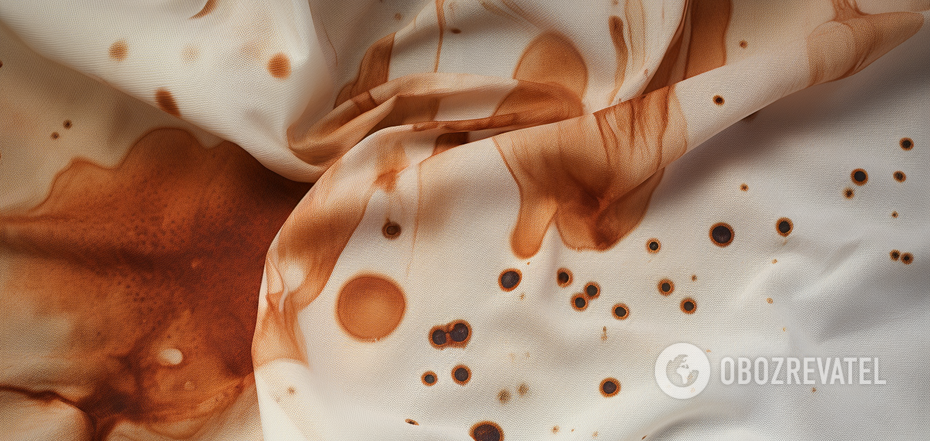Life
How to remove old stains: universal life hacks
The first step in preparing clothes for washing is not only sorting them by fabric type and color. It's also important to inspect the clothes for various stains. After all, it is the pretreatment before loading into the machine that allows you to effectively get rid of them.
OBOZREVATEL tells you how to correctly determine the type of stain, even if it is old. And how to treat it to remove dirt.
Determining the type of stain
In some stains, their origin is obvious. For example, you're unlikely to confuse a felt-tip pen, paint, or ink with something else. Organic stains, on the other hand, change their appearance over time.
This is how a grease stain becomes fuzzy and "blurry". Also, fat can become darker over time.
But vegetable dyes, such as fruit or grass juice, coffee, tea, or wine, leave stains with a clear outline. This outline is usually darker than the center of the stain. Blood stains behave in the same way.
How to clean stains properly
Regardless of whether the stain is fresh or old, it should be cleaned from the edges to the center, avoiding friction. This will prevent the stain from spreading over the surface of the fabric and penetrating deeper into the fibers. It is better to repeat the treatment several times than to rub the stain into the textile tightly. The older the stain, the more cleaning sessions it will need.
It is also important to always test the chosen cleaning agent on an inconspicuous area, for example, somewhere on the back in a large seam. The fact is that any stain remover is a solvent for the type of dirt it removes. And it can destroy not only the stain, but also the fabric fibers or its dye. Therefore, a preliminary test is always necessary.
How to clean an old stain
Even if you don't know what exactly left a mark on your clothes, you can use universal stain removers. After a preliminary test, of course.
Vinegar - dilute it in equal proportions with water and soak the item in this solution for a short time. It works well on light fabrics, but it can discolor dark fabrics.
Ammonia is an effective remedy for many types of stains, but it can damage synthetic items. Mix ammonia with hot water in a 1:1 ratio and treat the stain with the solution. After that, wash the item as usual. To remove traces of fruit juices, a weaker solution is suitable - a teaspoon of ammonia is diluted in a liter of water. Greasy stains are best treated with a mixture of this product, table salt and water in a ratio of 1:1:3.
Glycerin - the product is slightly heated and applied to the stain for 15-20 minutes, after which it is additionally wiped with a cotton swab dipped in glycerin. Then the item is washed in the usual way. Glycerin is good for cleaning coffee and cocoa.
Gasoline is a powerful solvent that removes most types of contaminants. It works well when mixed with alcohol. Add one teaspoon of gasoline to half a glass of alcohol. But this cleaning is best done only if other means have failed.
Lemon juice - can clean stains with its vapors. To do this, heat it up and hold the item with the stain over a container. It also works well in a 1:1 combination with vodka.
Earlier, OBOZREVATEL told you how to restore color to any white item.
Subscribe to OBOZREVATEL's Telegram and Viber channels to keep up with the latest developments.



























